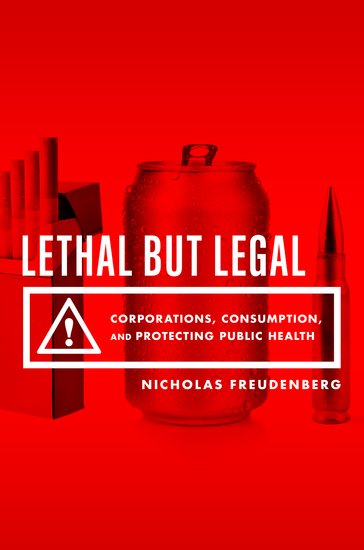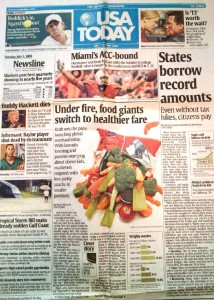Betsy McKay of The Wall Street Journal organized and moderated a debate on this question. I was a participant along with Brian Wansink , the John S. Dyson professor of marketing at Cornell University and Michael D. Tanner, senior fellow at the Cato Institute.
The debate is lengthy—you can read all of it online—but here are my initial responses to the two questions asked of me.
WSJ: What role should government play in addressing the obesity epidemic?
DR. NESTLE: The government is up to its ears in policies that promote obesity. To name only a handful: supporting production of food commodities, but not of fruits and vegetables; permitting food and beverage companies to deduct marketing expenses from taxes; permitting SNAP benefits [food stamps] to be used on any food, thereby encouraging food companies to market directly to low-income groups.
Research on the prevalence of obesity shows that after decades of remaining at the same level, it began to increase sharply in the early 1980s. Our sense of personal responsibility did not change then. What did change was the food environment, transformed by food industry imperatives to increase sales, to one that increasingly urged people to “eat more” by making it socially acceptable to eat anywhere, anytime, and in very large amounts. In this kind of food environment, all but the most mindful eaters overeat. Few of us are in that category.
The food, beverage and restaurant industries collectively spend roughly $16 billion a year to promote sales through advertising agencies, perhaps $2 billion of that targeted at children. Marketing to children is well established to encourage kids to want advertised products, pester their parents for them, and believe that those products are what they are supposed to be eating. The “I am responsible” argument does not work for children (I’m not aware of evidence that it works well for adults either). Because regular consumption of junk foods and sugary drinks is linked to obesity in children, marketing these products to them is overtly unethical.
To expect food and beverage companies, whose sole purpose is to increase sales and report growth in sales every quarter, to voluntarily stop marketing to children makes no sense. On ethical grounds alone, government intervention is essential.
Given the personal and economic costs of obesity—currently estimated at $190 billion a year—governments have many reasons to promote the health of their populations. Just ask the military.
WSJ: Let’s talk about some specific initiatives. Will Mayor Bloomberg’s cap on soda sizes reduce soda consumption? What about the proposed municipal tax of a penny an ounce on sugary drinks in Richmond, Calif.?
DR. NESTLE: If only education and personal responsibility worked to improve eating behavior. Brian Wansink’s research clearly shows that his own students, diligently educated to understand the effect of large food portions on eating behavior, will still eat more when given more food—and, more seriously, they will underestimate the amount they have eaten.
Education must be backed up by a supportive environment. So why not create a food environment that makes it easier for people to eat less? Mayor Bloomberg’s idea of capping soda sizes at 16 ounces is an interesting approach to doing just that. A 16-ounce soda is not exactly abstemious. It is two standard servings, 50 grams of sugar and 200 calories.
To suggest that food laws will not change behavior makes little sense. For one thing, anti-obesity initiatives have scarcely been tried. For another, the history of anti-smoking interventions suggests quite the opposite. Attempts to get smokers to quit by invoking personal responsibility made little headway. Smokers quit when the government made smoking so inconvenient and expensive that it became easier to stop than to continue.
The intense response of soda companies to Mayor Bloomberg’s cap on soda size is testimony to the effectiveness of regulatory approaches. The companies would not be putting this kind of effort or spending millions to oppose an action they expected to fail.






